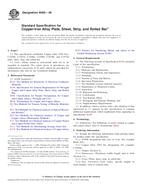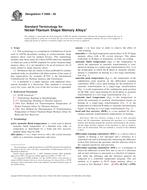1.1 These test methods provide a basic procedure for evaluating the resistance of wood and wood-base materials to direct withdrawal of nails, staples, and screws. Spikes are included as nails in this standard.
1.2 The tests also provide a basis for determining comparable performance of different types and sizes of nails, staples, and screws in direct withdrawal from wood and wood-base materials.
This standard does not purport to address all of the safety problems, if any, associated with its use. It is the responsibility of the user of this standard to establish appropriate safety and health practices and determine the applicability of regulatory limitations prior to use.
1.3 This test method covers the determination of the resistance to lateral movement offered by a single nail, staple, or screw in wood members. The test provides comparative data for various species of wood. This general test method can also be used for evaluating other types and sizes of fastenings either in wood or other building materials such as plywood, hardboard, etc., or combinations of materials. Furthermore, where required for specific purposes, the general method can be used for evaluating the lateral resistance of sizes of nails, staples, and screws other than those specified, and joints employing two or more fasteners. It is recommended that when such tests are made, the specified procedure be followed as closely as possible and all deviations be completely described.
1.4 This test method provides a suitable procedure for evaluating the strength and rigidity of timber joints fastened with bolts or with metal connectors which usually also require bolts to form the joint. The test serves as a basis for developing design criteria and for determining the effect of various factors on the strength and efficiency of the joint.
1.5 This test method covers determination of the tensile strength and stiffness characteristics of symmetrical joints in which parallel planar wood members are connected by fasteners of the type commonly known as “truss plates.” This method has been especially designed for determining the tensile properties of joints that connect nominal 2-in. dimension lumber such as those commonly used in light roof truss assemblies. It is recommended that the specified procedure be followed as closely as is practicable and that any deviations be described.
Product Details
- Published:
- 03/01/2006
- Number of Pages:
- 11
- File Size:
- 1 file , 210 KB
- Redline File Size:
- 2 files , 400 KB


